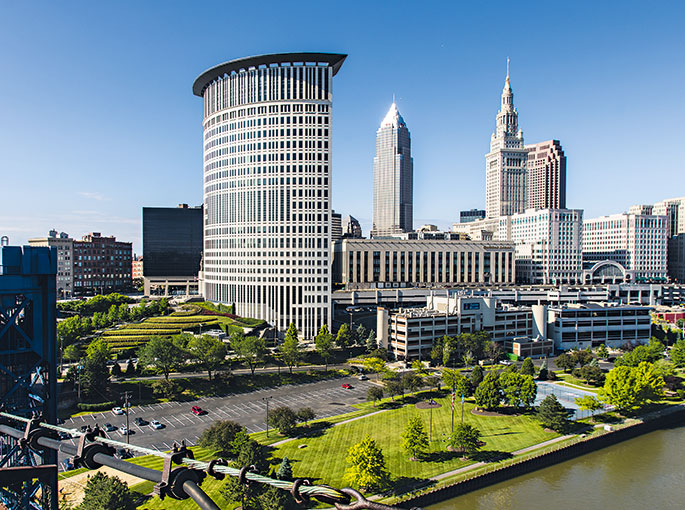
Cleveland, located in the state of Ohio, struggled in the late 20th century, as traditional American manufacturing industries relocated or shut down. The city formed part of the infamous Rust Belt of the deindustrialising Midwest. The once depressed city, however, is now on the mend and offers a number of benefits for potential investors.
The city and surrounding area play host to a variety of educational institutions, boasting over 25 accredited universities and colleges, with some among the largest in the country. The region also has 52 two-year community colleges and 62 non-diploma training centres. In total, the Cleveland area sees around $4bn in annual college expenditure. On any given year, about 320,000 people will be enrolled in a college in the area. Within a 200-mile radius, nearly a million people are enrolled in a four-year college programme.
The city has finally caught up with the national trend of young college graduates looking to live in urban environments
Cream of the crop
Each year, skilled graduates will be searching for job opportunities. Traditionally, these graduates would have moved a few states west, to Chicago, or to prosperous and trendy coastal regions such as New York, San Francisco and Los Angeles. In recent years, however, this has changed. Downtown Cleveland, once a place where poverty and soulless office blocks coexisted, with the workers commuting in and out of the suburbs, has been revitalised. The city has finally caught up with the national trend of young college graduates looking to live in urban environments, and now, according to City Lab: “12,000 people live in the two square miles that make up downtown Cleveland – the largest number in 60 years – and residential occupancy rates are over 95 percent.” This means that many of those finishing university in and around the city will be bound for downtown Cleveland after graduation, in search of jobs.
The Cleveland region, with a population of four million, has a workforce totalling two million. Despite experiencing decline, the area is still one of the nation’s leading car producers, and other types of high-tech manufacturing also thrive there. It’s a vital hub for aerospace and aviation component design, engineering and production, and it is also the most significant global supplier for aerospace manufacturing firms Airbus and Boeing. In total, the industry is worth $8bn to the area, though Cleveland has also diversified away from manufacturing in recent years.
Economic diversity
Many Fortune 500 companies have chosen to call the Forest City home. Applied Industrial Technologies, Cliffs Natural Resources, Forest City Enterprises, NACCO Industries, Sherwin-Williams and KeyCorp all have their headquarters located in the city. The medical sector is also important, with the Cleveland Clinic being the city’s largest private employer. Other medical employers include University Hospitals of Cleveland, the insurance company Medical Mutual of Ohio and the MetroHealth medical centre.
The city has, in recent years, become a hub for biomedical research and start-up investment. In 2014, Cleveland received $398m in biomedical investments, ranking second among other major Midwest cities, according to the BioEnterprise Midwest Healthcare Growth Capital Report. The city has an attractive mix of highly skilled blue-collar workers and high-calibre white-collar workers to draw upon.
The local government is also very friendly to private enterprise. Ohio is, according to Cleveland Plus Business, “among the top three states for favourable business tax rates on new investments”. These tax rates include: no tax on corporate profits, no tax on machinery, equipment and R&D investments, no tax on products sold to customers outside of Ohio, and no tax on tangible personal property. This pro-business tax structure allows any investor operating in Cleveland to keep a larger portion of their profits than in nearby states.

